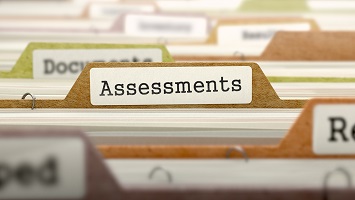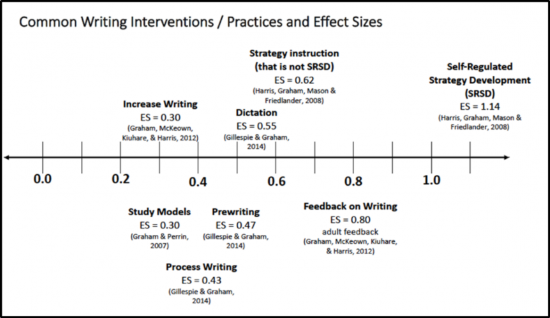Throughout the school year students form social identities about who they are and what they bring to the world. These identities are shaped in many different ways – from race and gender to religious affiliation, favorite band or team – and with each of these identities come a set of expectations. There are many different perspectives and theories on identity development, but all agree that the journey is individualistic, as no one person’s experience is the same as another’s. For one in six students, this social identity includes that of being a student with a disability (NYSED, 2016).
How we see ourselves informs how we see our abilities and the actions we do or do not take. Dr. Claude Steele, in his groundbreaking 2012 work, Whistling Vivaldi, adds a layer to this complexity — given certain conditions the identities we carry can threaten performance. For years Steele studied the impact of identity on achievement, his curiosity about the topic sparked during his time teaching at the University of Michigan and Stanford University. Steele observed that students of color, equally capable as their white peers, continually underperformed as a group. Driven to understand why, Steele conducted numerous studies and came to the conclusion that stereotype threats, which he defines as “the threat of being viewed through the lens of a negative stereotype, or the fear of doing something that would inadvertently confirm that stereotype”, can impact student achievement (Steele, 2010). Furthermore, Steele states:
Everyone experiences stereotype threat. We are all members of some group about which negative stereotypes exist, from white males and Methodists to women and the elderly. And in a situation where one of those stereotypes applies—a man talking to women about pay equity, for example, or an aging faculty member trying to remember a number sequence in the middle of a lecture—we know that we may be judged by it (Steele, 1999).
An example of the impact of stereotype threat comes from a study by Shih, Pittinsky & Ambady (1999). A challenging math exam was given to a group of high-achieving Asian women. In one group, the women were subtly reminded of their Asian identity. Another group was reminded of their identity as women. A third group, the control group, was not reminded of either identity. The results? The group reminded of their Asian identity outperformed the control group while the group reminded of their female identity underperformed compared to the control group.
As demonstrated here, stereotype threat can impact cognitive functioning. When it takes root, the brain goes into overdrive. Rather than focus entirely on the task at hand, the mind is busy “slaying ghosts” in the background – diverting energy to disprove the stereotype (Steele, 2010). Stereotype threat has the greatest impact when the stakes are high for an individual and when an individual cares about doing well in a situation (Steele, 2010).
This prompted me to think about the stereotype threats that exist for our students with disabilities, and the possible impact on academic and social emotional performance. How can we combat such stereotype threat?
First and foremost, we need to become more aware. Unknowingly and unintentionally we may actually be reinforcing stereotypes that stand in the way of learning. Hold up a mirror and listen to yourself to uncover these unintentional reinforcers. Ask: What kinds of questions did I ask my students with disabilities? What kinds of questions do I ask their non-disabled peers? How many students with disabilities did I call on in math class today? What impact does it have when we refer to a student by the services s/he receives, e.g., “Special Ed student”, rather than as a student first, e.g., “student with a disability?”
Some other ideas:
⇒ Celebrate diversity rather than holding a colorblind stance. Decorate the classroom in ways that reflect the cultural diversity and backgrounds your students bring.
⇒ Remind students of positive role models.
⇒ Think about those figures who fly in the face of stereotypes; e.g., Neil deGrasse Tyson, Albert Einstein, Stephen Hawking, Sonia Sotomayor.
⇒ Foster a growth mindset! Check out Carol Dweck’s work on developing growth mindsets by exploring our School Tool on page 3.
With the New York State exams in grades 3-8 coming up, let’s think about the impact of stereotype threat and the steps we can take to uncover and address it.
References
Shih, M., Pittinsky, T., Ambady, N. (1 Jan 1999). Stereotype Susceptibility: Identity Salience and Shifts in Quantitative Performance. Psychological Science, 10 (1), 80-83.
Steele, Claude. (2010). Whistling Vivaldi: and other clues to how stereotypes affect us. New York : W.W. Norton & Company.
Steele, C.M. (August, 1999). Thin ice: Stereotype threat and black college students. Retrieved February 2017 from https://www.theatlantic.com/



 Data-Driven Decision-Making
Data-Driven Decision-Making  Increasing Post-School Success through Interagency Collaboration
Increasing Post-School Success through Interagency Collaboration  How Can We Improve Deeper Learning for Students with Disabilities?
How Can We Improve Deeper Learning for Students with Disabilities?  Positive Classroom Management: Creating an Environment for Learning
Positive Classroom Management: Creating an Environment for Learning  Self-Determination Skills Empower Students of All Ages
Self-Determination Skills Empower Students of All Ages  Fidelity of Implementation: What is it and Why does it Matter?
Fidelity of Implementation: What is it and Why does it Matter?  Rethinking Classroom Assessment
Rethinking Classroom Assessment  A Three-Step Approach to Identifying Developmentally Appropriate Practices
A Three-Step Approach to Identifying Developmentally Appropriate Practices  Transforming Evidence-Based Practices into Usable Innovations: A Case Study with SRSD
Transforming Evidence-Based Practices into Usable Innovations: A Case Study with SRSD